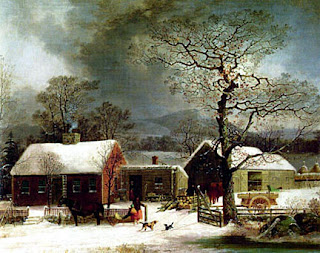 QUESTION:
QUESTION: Now that I’m in my fifties, I look back nostalgically on those cold winter days when snow piled high all around our house and school was closed. Those were the days when I got to spend the day sledding, or as my boyhood friends and I called it, “coasting.” Recently, I picked up this old sled at a flea market. It’s in pretty poor condition, but I’d like to bring it back to life. Can you tell me anything about it? Also, do you have any suggestions for its restoration?
ANSWER: What you purchased isn’t just any typical sled. It’s one made to hold an infant or a toddler or two. It’s also a non-steerable pull sled, unlike the one you probably used on those snowy days, known as a racing sled or Flexible Flyer.
But to really understand where this one came from, it’s important to go back and take a look at how sledding got to be such a popular pastime in America.

The neat thing about sleds is that everyone could enjoy them—young and old, rich and poor. They were quintessentially All-American. To a boy, a sled was his ticket to cheap and exciting wintertime fun. During the 1950s, coasting, as boys dubbed the sport, became the winter pastime of hundreds of thousands of kids living in the northern states.

Though sledding existed in the US since Colonial times, it really didn’t gain popularity until the late 19th century when downhill sledding became an organized sport and sled design a sophisticated art. Racing was what it was all about. Early sleds bore names like the Comet, Reliance, Thunder, or Flying Cloud.
With the invention of the Flexible Flyer, the first steerable sled, by Sameul L. Allen in the late 1880s, sledding drastically changed. Allen’s prominent Philadelphia Quaker parents sent him to the Westtown Boarding School in Chester County, Pennsylvania, as age 11. After graduation, he moved to the family farm in 1861 near Westfield, New Jersey, half-way between Moorestown and Riverton, where he married and became a farmer. Soon he established a company to manufacture farm implements. But since this was seasonal, Allen needed a product he could make in the summer and sell in the winter. He decided to make sleds.
Allen’s first sled, known as the "Fairy Coaster," was a double runner bobsled that held three or four adults. Light and folding easily for transport, the sled’s runners and supports were made of steel with plush seats. But at $50.00, it cost too much to sell in quantity. He began testing his sleds at Westtown School (also known for its part in the development of the game Monopoly), his alma mater.

It wasn’t until he came up with the ideas for a T-shaped runner and slatted seat, both new concepts at this time, that he made any progress. After it was proven, Allen called his sled the “Flexible Flyer,” an appropriate name because the sled was fast considering its weight and size and the only steerable sled at the time.
Allen eventually convinced two great department stores, John Wanamaker in Philadelphia and R.H. Macy in New York, to sell his Flexible Flyers. By 1915, he was selling 2,000 sleds a day.
By 1917, sled manufacturers like Casper H. Oermann of The American Toy and Novelty Works in York, Pennsylvania, built their sleds with hardwoods and nickel plated steel bumpers and grooved runners.

B. Garton, who began making his sleds in 1879, in Sheboygan, Wisconsin, made his sled decks from a special weather resistant five-layered plywood imported from Finland. He then silk screened colorful designs, using a brilliant red paint known in the trade as "Garton Red," on each deck.
Sleds came in two basic types–clipper and cutters. Designed for boys and perfect for belly flops, the long and low slung clipper sled had its deck mounted directly onto low, "squatty" wooden or metal runners which ended in a point. The rider threw himself on the deck and sped down the hill head first. Speed was most important.
The Standard Novelty Company of Duncannon, Pa, produced The Racer and Sno-ball, both nonsteerable sleds, and the Lightning Guider. By the 1920s, it had produced more children's sleds than any other American company. Today, the factory operates as the Old Sled Works, a museum, antique, and craft center.

Bringing an old sled that has seen better days back to life isn’t difficult. But it does take time and effort. To restore any sled, first sand all the metal parts with coarse sandpaper, then medium, then fine. Give the metal parts an undercoating of RustOLeum paint, followed by a second coat of RustOLeum in whatever color you choose. For the most part, these sleds would have had bright red metal parts.
Next, sand the wooden parts with medium sandpaper until smooth, then wipe down with a dampish cloth, preferably an old washcloth. Repeat the process with fine sandpaper. After wiping down the wood a second time, give it two coats of coat of glossy polyurthethane varnish. You may wish to stain the wood using an oak stain first. Of course, you could choose to paint the desk and surround, but these sleds would have had natural finishes.
To read more articles on antiques, please visit the
Antiques Article section of my Web site. And to stay up to the minute on antiques and collectibles, please join the other 24,000 readers by following my free online magazine, #
TheAntiquesAlmanac. Learn more about vintage games in the 2019 Holiday Edition, "Games, Games, and More Games," online now. And to read daily posts about unique objects from the past and their histories, like the
#Antiques and More Collection on Facebook.






















